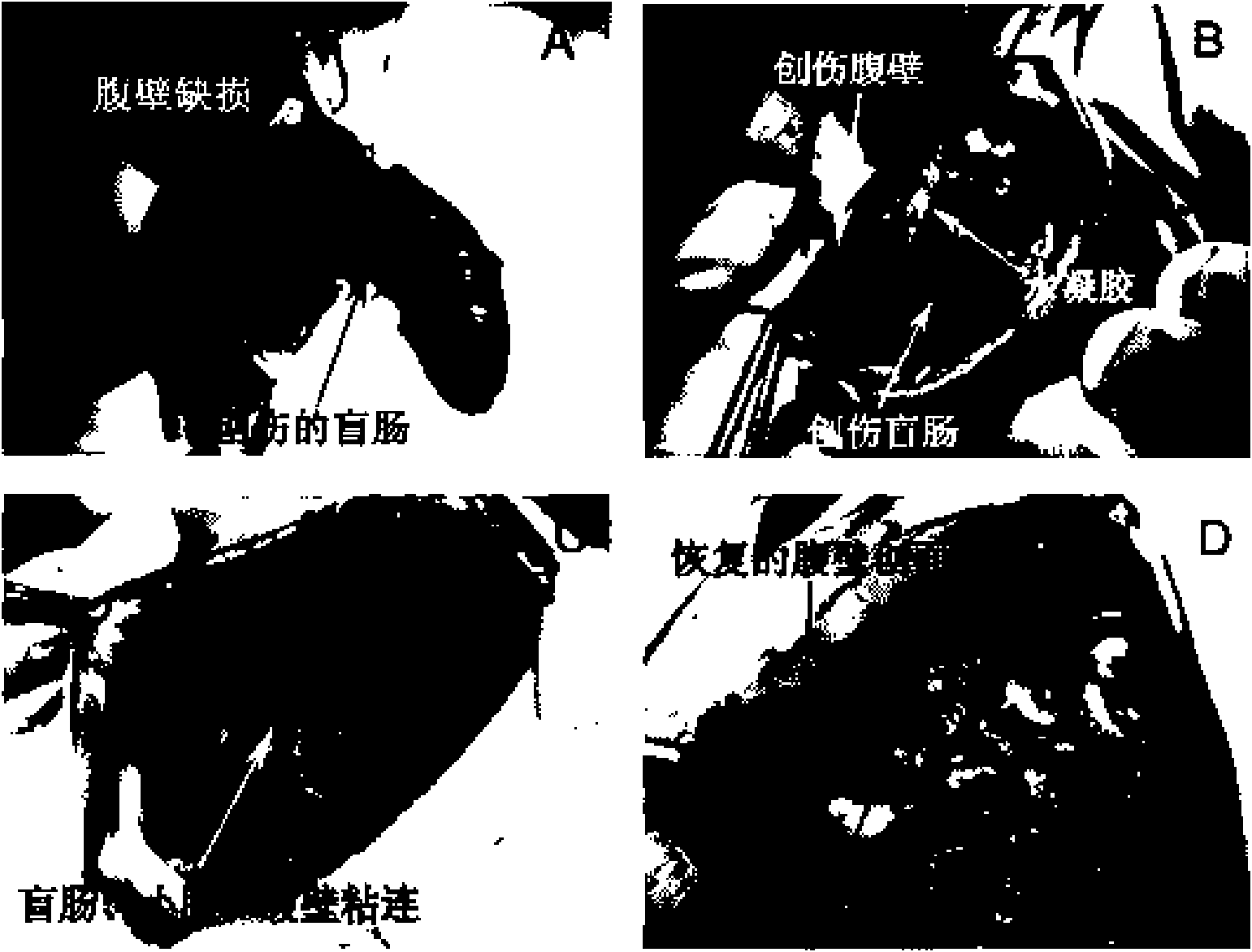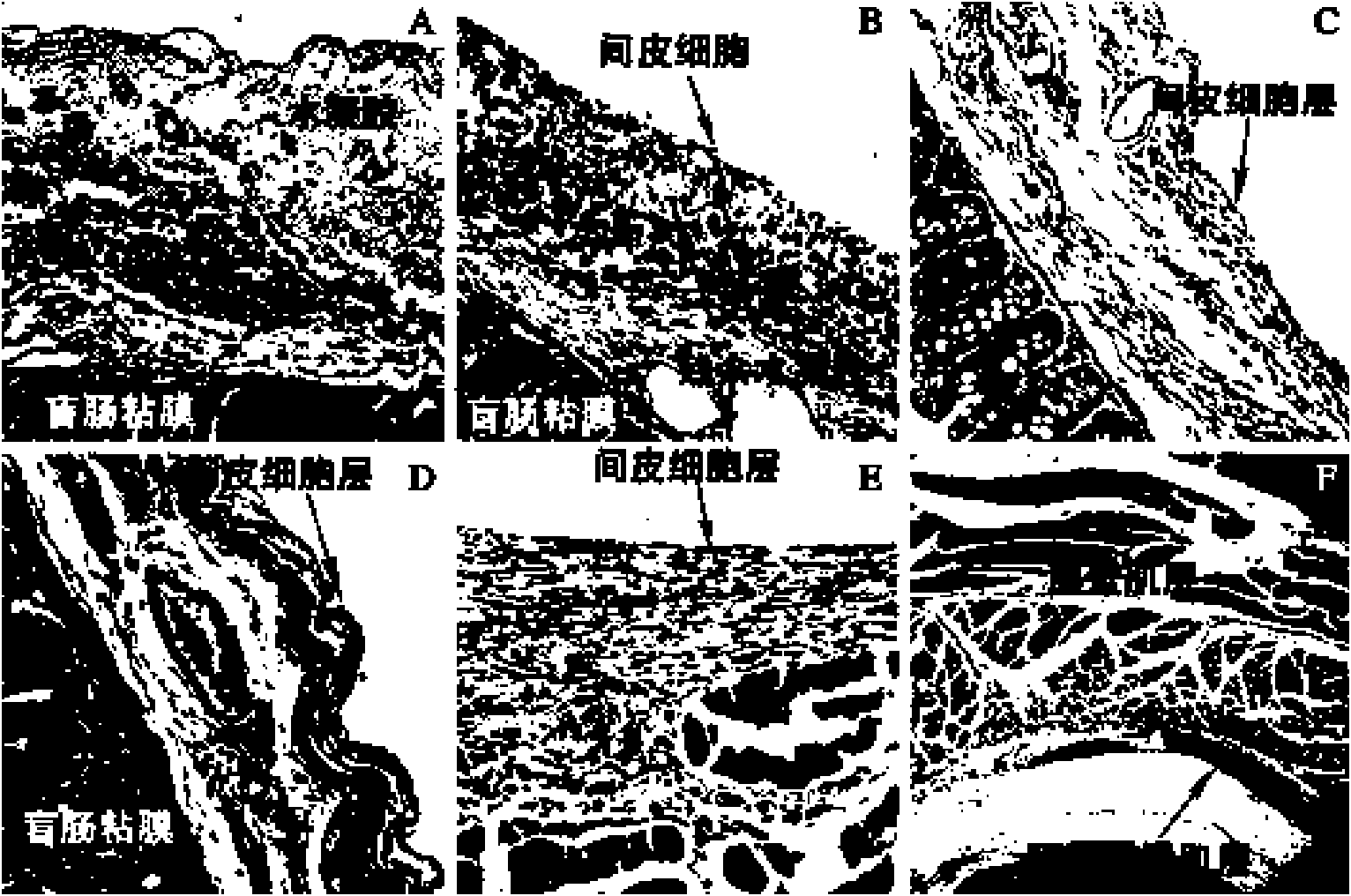Application of PEG-PCL-PEG triblock copolymer in preparation of medical anti-adhesion material
A copolymer and anti-adhesion technology, which is applied in the field of tri-block copolymers to prepare medical anti-adhesion materials, can solve the problems of poor anti-adhesion effect, unfavorable human safety, difficult transportation and storage, etc., and achieves outstanding comprehensive performance and low cost , the effect of easy preparation
- Summary
- Abstract
- Description
- Claims
- Application Information
AI Technical Summary
Problems solved by technology
Method used
Image
Examples
Embodiment 1
[0045] Synthesis and verification of embodiment 1 PEG-PCL-PEG copolymer
[0046] 1) Synthesis of PEG-PCL-PEG copolymer
[0047] The synthetic reaction of PEG-PCL-PEG copolymer of the present invention is as Image 6 Shown:
[0048] Where X and Y are both positive integers.
[0049] According to the synthetic route of above formula, add a certain amount of polyethylene glycol monomethyl ether (MPEG) and ε-caprolactone (ε-CL) in the there-necked flask that stirrer is equipped with, take stannous octoate as catalyst, in React for 6 hours at 130°C under nitrogen protection, cool down to 80°C, add crosslinking agent isophorone diisocyanate (IPDI) and continue to react for 6 hours to obtain the product, cool to room temperature for purification, and dry. In addition, suitable diisocyanates include: toluene diisocyanate, hexamethylene diisocyanate (HMDI), L-lysine ethyl ester diisocyanate (LDI, lysine ethyl ester diisocyanate), diphenylmethane-4,4' - Diisocyanates, etc. When car...
Embodiment 2
[0060] Embodiment 2 uses PEG-PCL-PEG copolymer to prepare medical anti-adhesion material
[0061] Use the PEG-PCL-PEG copolymer prepared by the above-described embodiment to prepare a medical anti-adhesion material: first make E 550 -C 2200 -E 550 Dissolve in physiological saline, the concentration is 15-40wt%, the preferred concentration is 25wt%, fully stirred, and mixed evenly. The mixed physiological saline solution was heated and stirred at 50°C for about 5 minutes to form a translucent viscous liquid, which was cooled to below 4°C for use. There are two methods of use: a: inject the sol-like hydrogel around the wound, and form a gel by increasing the temperature. B: The sol-like hydrogel is refrigerated at below 4°C for more than 24 hours. Through crystallization, the hydrogel is completely gelled. When applied, it is directly applied to the wound surface of the abdominal cavity. Considering the convenience of use and storage, we choose to adopt the second method, th...
Embodiment 3
[0062] Embodiment 3 Anti-adhesion effect experiment of medical anti-adhesion material of the present invention
[0063] The hydrogel is applied as an anti-adhesion barrier. The specific method is to dissolve the copolymer prepared in Example 2 in physiological saline, prepare a 25wt% solution, and then refrigerate the sol-like hydrogel for more than 24 hours at below 4°C. Through crystallization, the hydrogel After the gelation is completed, when applying, directly spread the gel evenly around the wound in the abdominal cavity.
[0064] 1. Abdominal wall-cecum friction injury model: anesthetize the animal, open the abdomen, rub the cecum with dry gauze, damage the surface serosa layer, and peel off the serosa layer with a scalpel on the adjacent abdominal wall (mouse: 1×1cm; large Rat: 2X2cm). Then apply PEG-PCL-PEG hydrogel (mice: 0.2ml; rats: 1ml) on the injured surface evenly, and close the abdominal cavity.
[0065] The following mainly through E 550 -C 2200 -E 550 T...
PUM
 Login to View More
Login to View More Abstract
Description
Claims
Application Information
 Login to View More
Login to View More - R&D
- Intellectual Property
- Life Sciences
- Materials
- Tech Scout
- Unparalleled Data Quality
- Higher Quality Content
- 60% Fewer Hallucinations
Browse by: Latest US Patents, China's latest patents, Technical Efficacy Thesaurus, Application Domain, Technology Topic, Popular Technical Reports.
© 2025 PatSnap. All rights reserved.Legal|Privacy policy|Modern Slavery Act Transparency Statement|Sitemap|About US| Contact US: help@patsnap.com



